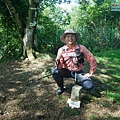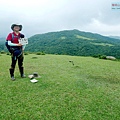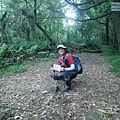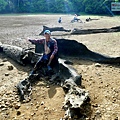上一頁下一頁

P1690569

P1690570 (1)

P1690570 (2)

P1690570 (3)

P1690570 (4)

P1690570 (5)

P1690574

P1690575

P1690578

P1690580 (1)

P1690580 (2)

P1690580 (3)

P1690580 (4)

P1690580 (5)

P1690580 (6)

P1690586

P1690587

P1690591

P1690592

P1690593

P1690594

P1690595

P1690753

P1700126

P1700410

P1700570

P1700751

P1700802

P1700928

P1710031

P1710074-

P1710484

P1710599

P1720167

P1720276

P1720387

P1720504

P1720517

P1720770

P1720994

P1730129

P1730135

P1730197

P1730371

P1730459

P1730565

P1730665

P1740044
上一頁下一頁
相片最新留言
此相簿內的相片目前沒有留言
此相簿內的相片出現在:
相簿列表資訊
- 最新上傳:
- 2020/08/06
- 全站分類:
- 不設分類
- 本日人氣:
- 0
- 累積人氣:
- 62

Pulling the secrets of dark matter out of a hat
Grad student Chiara Salemi and Professor Lindley Winslow use the ABRACADABRA instrument to reveal insights into dark matter.
Fernanda Ferreira | School of Science
Publication Date:
December 2, 2020
Press Inquiries
Photo of Chiara Salemi with blue latex gloves pointing at the ABRACADABRA toroid magnet
Caption:
Chiara Salemi, with ABRACADABRA open, shows the magnet inside.
Credits:
Photo: Jon Ouellet
Photo of the four members of the ABRACADABRA team standing in front of the instrument.
Caption:
MIT team members Jonathan Ouellet, Lindley Winslow, Chiara Salemi, and Reyco Henning (from UNC – Chapel Hill) with ABRACADABRA, the instrument used to detect axions, a hypothetical particle.
Credits:
Photo: Lindley Winslow
On the first floor of MIT’s Laboratory for Nuclear Science hangs an instrument called “A Broadband/Resonant Approach to Cosmic Axion Detection with an Amplifying B-field Ring Apparatus,” or ABRACADABRA for short. As the name states, ABRACADABRA’s goal is to detect axions, a hypothetical particle that may be the primary constituent of dark matter, the unseen and as-of-yet unexplained material that makes up the bulk of the universe.
For Chiara Salemi, a fourth-year physics graduate student in the group of Lindley Winslow, the Jerrold R. Zacharias Career Development Associate Professor of Physics, ABRACADABRA is the perfect instrument to work on during her PhD. “I wanted a small experiment so I could do all the different pieces of the experiment,” Salemi says. ABRACADABRA, which consists of an extremely well-shielded magnet, is the size of a basketball.
Salemi’s willingness to work on all aspects is unique. “Experimental physics roughly has three components: hardware, computation, and phenomenology,” Winslow explains, with students leaning toward one of the three. “Chiara’s affinity and strengths are evenly distributed across the three areas,” Winslow says. “It makes her a particularly strong student.”
Since beginning her PhD, Salemi has worked on everything from updating ABRACADABRA’s circuitry for its second run to analyzing the instrument’s data to look for the first sign of a dark matter particle.
A happy accident
When Salemi started college, she wasn’t planning on pursuing physics. “I was leaning towards science, but I wasn’t totally sure of that or what field within science I would like.” During her first semester at the University of North Carolina at Chapel Hill, she took physics with the aim of determining whether this might be a field she might be interested in. “And then, I just totally fell in love with it, because I started doing research, and research is fun.”
Throughout her undergraduate career, Salemi collected research experiences. She operated radio telescopes in West Virginia. She spent a semester in Geneva, Switzerland, looking for Higgs boson decays at the European Organization for Nuclear Research, better known as CERN. At the Lawrence Berkeley National Laboratory, she tinkered with the design of semiconductors for the detection of neutrinos. It was at one of these research experiences, a summer program at Fermilab in Illinois, that she began working with axions. “Like many things in life, it was an accident.”
Salemi had applied for the summer program because she wanted to continue working on neutrinos and “Fermilab is the hub of all things neutrino.” But when she got there, Salemi found out that she was assigned to work on axions. “I was extremely disappointed, but I ended up falling in love with axions, because they’re really interesting and different from other particle physics experiments.”
Elementary particles in the universe and the forces that regulate their interactions are explained by the Standard Model of particle physics. The name belies the importance of this theory; the Standard Model, which was developed in the early 1970s, describes almost everything in the subatomic world. “But there are some huge gaping holes,” Salemi says. “And one of these huge gaping holes is dark matter.”
Dark matter is matter we cannot see. Unlike normal matter, which interacts with light — absorbing it, reflecting it, emitting it — dark matter does not or only barely interacts with light, making it invisible to both the naked eye and current instruments. Its existence is deduced by its impact on visible matter. Despite its invisibility, dark matter is vastly more abundant, Salemi says. “There’s five times more dark matter in the universe than normal matter.”
Like its visible counterpart, which is made up of particles such as neutrons, protons, and electrons, dark matter is also made up of particles, but physicists still don’t know exactly what types. One candidate is the axion, and ABRACADABRA was designed to find it.
Small but mighty
Compared to CERN’s Large Hadron Collider, which is an instrument tasked with detecting proposed particles and has a circumference of 16.6 miles, ABRACADABRA is tiny. For Salemi, the instrument is representative of a new era of tabletop physics. Creating ever-larger instruments to quest after increasingly elusive particles had been the go-to strategy, but these have become increasingly expensive. “Because of that, people are coming up with all sorts of really interesting ideas on how to still make discoveries, but on a smaller budget,” Salemi says.
The design of ABRACADABRA was developed in 2016 by three theorists: Jesse Thaler, an associate professor of physics; Benjamin Safdi, then an MIT Pappalardo Fellow; and Yonatan Kahn PhD '15, then a graduate student of Thaler’s. Winslow, an experimental particle physicist, took that design and figured out how to make it a reality.
ABRACADABRA is composed of a series of magnetic coils in the shape of a toroid — picture an elongated donut — wrapped in a superconducting metal and kept refrigerated at around absolute zero. The magnet, which Salemi says is about the size of a large grapefruit, generates a magnetic field around the toroid but not in the donut hole. She explains that, should axions exist and interact with the magnetic field, a second magnetic field will appear within the donut hole. “The idea is that that would be a zero-field region, unless there’s an axion.”
It can take 10 or more years to take a theoretical design for an experiment and make it operational. ABRACADABRA’s journey was much shorter. “We went from a theoretical paper published in September 2016 to a result in October 2018,” Winslow says. The geometry of the toroidal magnet, Winslow says, provides a naturally low background region, the donut hole, in which to search for axions. “Unfortunately, we have gotten through the easy part and now have to reduce those already-low backgrounds,” says Winslow. “Chiara led the effort to increase the sensitivity of the experiment by a factor of 10,” says Winslow.
To detect a second magnetic field generated by an axion, you need an instrument that is incredibly sensitive, but also shielded from external noise. For ABRACADABRA, that shielding comes from the superconducting material and its frigid temperature. Even with these shields, ABRACADABRA can detect people walking in the lab and even pick up radio stations from around Boston, Massachusetts. “We can actually listen to the station from our data,” Salemi says. “It’s like the most expensive radio.”
If an axion signal is detected, Salemi and colleagues will first try hard to disprove it, looking for all potential sources of noise and eliminating them one by one. According to Salemi, detecting dark matter means awards, even a Nobel Prize. “So you don’t publish that kind of result without spending a very long time to make sure it’s correct.”
Results from ABRACADABRA’s first run were published in March 2019 in Physical Review Letters by Salemi, Winslow, and others in MIT's Department of Physics. No axions were detected, but the run pointed out tweaks the team could make to increase the instrument’s sensitivity prior to its second run that began in January 2020. “We have been working on setting up, running, and analyzing run 2 for about a year and a half,” says Salemi. Currently, all the data has been collected and the group is finishing up the analysis. The results of which will be published later this year.
As they prepare those results for publication, Salemi and her colleagues are already thinking of the next generation of axion detectors, called DM Radios, for Dark Matter Radios. Salemi says that this will be a much larger, multi-institute collaboration, and the design of the new instrument is still being conceived, including deciding the shape of the magnet. “We have two possible designs: One is the donut shape, and the other one is a cylinder shape.”
The search for axions began in 1977, when they were first theorized, and since the 1980s experimental physicists have been designing and improving instruments for detecting this elusive particle. For Salemi, it would be amazing to continue working on axions through to their discovery, although no one can predict when that may happen. “But, seeing experimental low-mass axion dark matter through from around the start to the finish? That I could do,” she says. “Fingers crossed.”
Share this news article on:
Twitter
Facebook
LinkedIn
Reddit
Print
Related Links
Chiara Salemi
Winslow Lab
ABRACADABRA
Laboratory for Nuclear Science
Center for Theoretical Physics
Department of Physics
School of Science
Related Topics
School of Science
Physics
Center for Theoretical Physics
Laboratory for Nuclear Science
Astrophysics
Dark matter
Research
Students
Graduate, postdoctoral
Profile
National Science Foundation (NSF)
Department of Energy (DoE)
Space, astronomy and planetary science